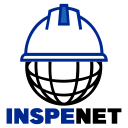Table of Contents
As a tank owner or operator, you are probably convinced that the value of the product inside your tank is more important than the tank itself. However,
Your tank design can optimize the amount of usable product and contribute directly to your profits. Are your tanks optimized to store the
If you have a traditional tank with an internal floating steel roof (IFR) or an external floating roof (EFR), you could be losing money due to inefficiencies that limit the tank’s operating capacity and generate excess dead product that you may not have known you could control.
Fortunately, with some simple design adjustments and modifications (such as changing the configuration of the lower legs) or with major investments (such as installing a dome or an aluminum internal floating roof – AIFR), you can maximize working capacity and inventory utilization. An optimized configuration not only helps to achieve higher profits, but also to improve environmental performance.
Maximize working capacity to improve bottom line
There are several factors that impact operating capacity:
- IFR movement limitations at the top and bottom of the tank, which dictate maximum and minimum fill heights.
- The depth of the floating roof system.
Designing a tank with a dome roof instead of a conical roof, and with IFR instead of EFR, can substantially improve working capacity performance.
Advantages of the dome roof over the conical roof:
- Conical roofs have beams that limit the rise of the floating roof, while domes allow flush mounting without interference.
- The domes facilitate the entry of foam chamber nozzles from the top of the casing, which increases the safe fill level and overfill capacity while maintaining regulatory compliance.
Advantages of low profile IFR versus EFR:
- The rim height of an aluminum IFR with a primary seal or a low-profile secondary seal is 24 inches.
- In contrast, a steel EFR with floats and blade-type secondary seal exceeds 63 in.
- This means that you can recover about one additional meter of operating capacity by opting for a low-profile roof.
A suspended IFR can also be adjusted downward to further increase tank capacity.
Impact of these improvements:
- Compared to a traditional EFR tank, an optimized tank can achieve 12-14% more capacity.
- Compared to a conventional IFR, an optimized tank can achieve 7-12% more capacity.
- In both cases, it is possible to operate with one less tank to achieve the same installed capacity, improving business performance and eliminating the carbon emissions and costs associated with building an additional tank.
Reduce dead product (heel) to recapture working capital
The dead product is often overlooked because it behaves like immobile inventory, but it should be a key factor when evaluating the cost of a tank.
With a suspended IFR, lowering the IFR can reduce dead product and improve cash flow. Each barrel of heel reduction equals freed up working capital.
Example:
- A 12-inch reduction in IFR position equates to 6,169 fewer barrels of dead product in a 210-foot tank.
- In a 300-foot tank, that same reduction represents 12,590 fewer barrels of dead product.
In addition, suspended IFRs work very well with elevated table or plateau bottoms , which move product and minimize dead inventory to the minimum necessary.
Even if you do not own the product, these strategies (lowering the ceiling and raising the bottom) make your tank more attractive for leasing, as the product owner will not have to pay for excess dead inventory, and this savings can be reflected in the lease rate.
Conclusion
Optimize tank design:
- Reduce costs.
- Increases working capacity and inventory utilization.
- Improves business profitability and environmental performance.
These improvements can be applied to both existing tanks coming out of service and new tanks under construction.
Make sure your next engineering project is optimized to maximize your company’s profitability in every operating cycle.
This article was developed by HMT LLC and published as part of the sixth edition of the Inspenet Brief September 2025, dedicated to technical content in the energy and industrial sector.


